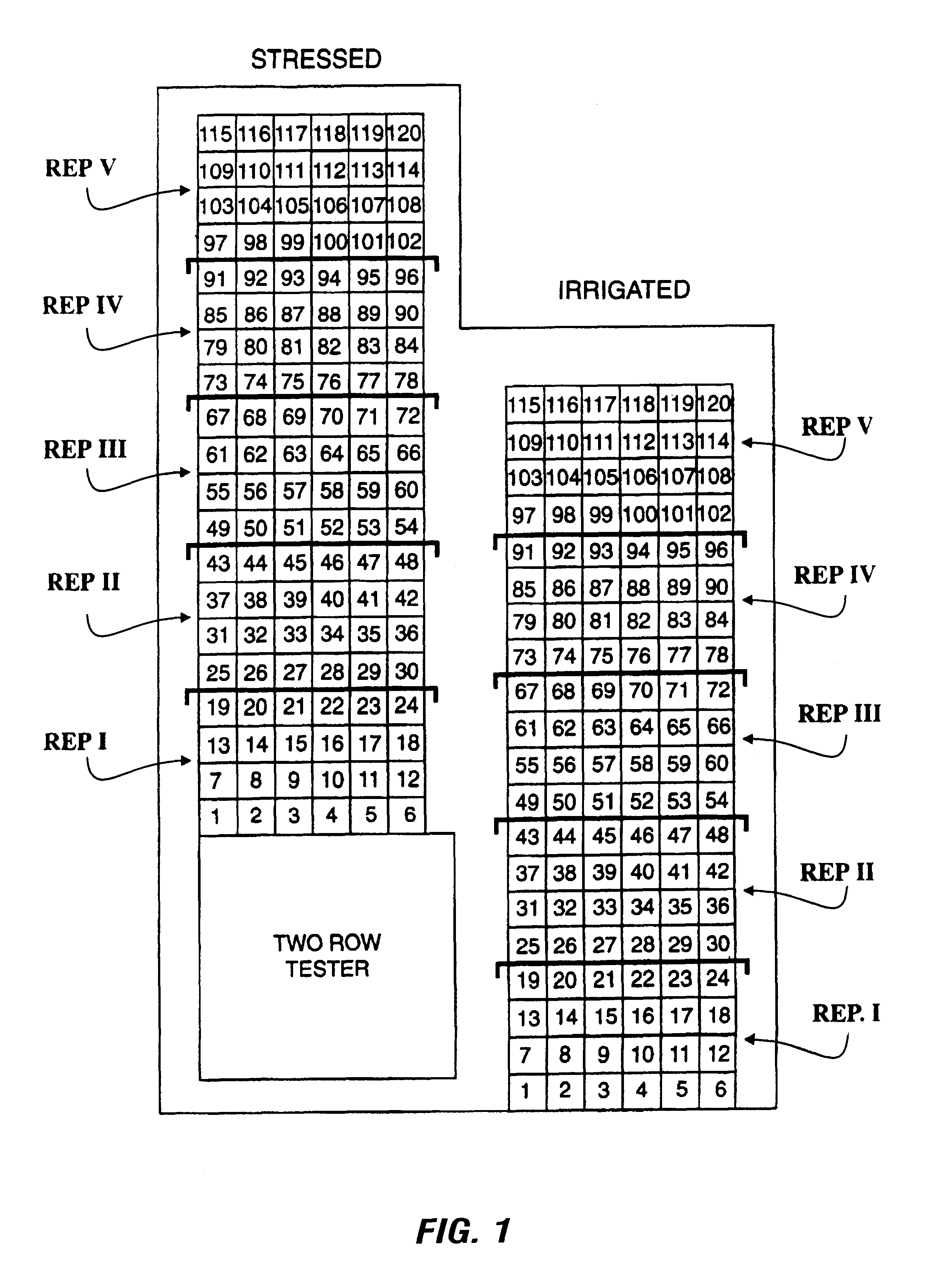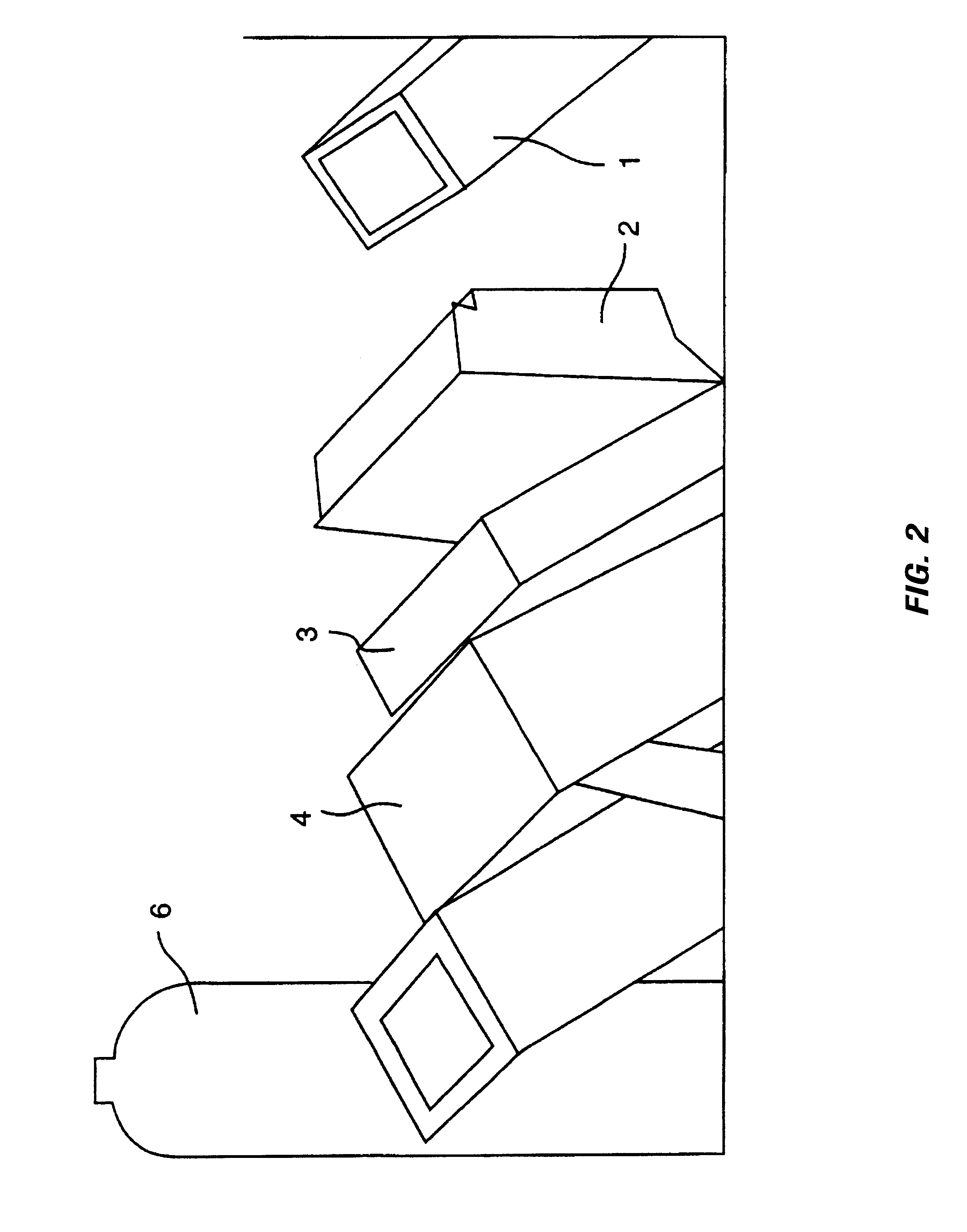Methods for classifying plants for evaluation and breeding programs by use of remote sensing and image analysis technology
a technology of image analysis and plant evaluation, applied in the field of methods for classifying plants for evaluation and breeding programs by using remote sensing and image analysis technology, can solve the problems of low resolution, affecting the performance of plants, and affecting the selection process, so as to improve the performance of traits to be improved, reduce costs and time involved, and improve selection
- Summary
- Abstract
- Description
- Claims
- Application Information
AI Technical Summary
Benefits of technology
Problems solved by technology
Method used
Image
Examples
example 1
Classification of Hybrid Corn Genotypic Differences for Remotely Sensed Canopy Thermal Characteristics in the Same Environment and the Relationship of These Differences to Yield Performance
Significant genotypic variation for leaf tissue midday water relations, physiological activity including leaf temperature and leaf rolling have been observed in both inbred and hybrid corn germplasm grown under various field conditions. Highly significant correlations have been detected between leaf tissue water status, the degree of observable leaf rolling and physiological activity. Out of such findings, generalized models of adaptive hydraulic responses have been developed. The recognition of these hydraulic response types suggest the specific way a plant regulates its internal water relations is associated with a cascade of physiological responses which culminates in the plant's ability to regulate its energy balance with the environment in which it is growing. Therefore, genotypes differing i...
example 2
Classification of Genotypic Differences for Canopy Temperatures Within and Across Environments as Determined with Remote Sensing Techniques
The capability of remote sensing techniques to detect or measure the trait or feature over a range of environments, is demonstrated in this example. Genotypic variation for canopy temperature characteristics was determined by remote sensing within and across two environments defined by water availability. This variable is one major environmental factor responsible for causing growing conditions to vary across a region such as the corn belt. A set of twenty-four hybrids were planted under two irrigation treatments. One plot received full irrigation whereas for the other plot, the "stress plot," irrigation was withheld for certain periods of time. Therefore, different irrigation treatments were used to simulate different growing conditions or environments. Because the plants in the two water environments were next to each another, other environment...
example 3
Use of Canopy Multispectral Reflectance of Corn Germplasm to Predict Yield Performance in Plant Evaluation and Selection Programs
In addition to collecting canopy information in the thermal region of the spectrum as illustrated with Examples 1 and 2, High Resolution Color Infrared (CIR) photography was taken over these plots. These photographs revealed qualitative differences between the 4 row subplots of the 24 hybrids grown within and across the water treatments. A CIR photograph of the stress and irrigated plots is shown in FIG. 4. Digitization and subsequent image analysis of the photograph was performed to generate quantified values for the three bands of reflectance used to create the photograph (FIG. 5). The three bands include the green, red and near infrared (not thermal) portions of the energy spectrum. The near-infrared band is considered to be an indicator of crop conditions and is used in satellite crop assessment programs. Reflectance in the near-infrared region is pred...
PUM
 Login to View More
Login to View More Abstract
Description
Claims
Application Information
 Login to View More
Login to View More - R&D
- Intellectual Property
- Life Sciences
- Materials
- Tech Scout
- Unparalleled Data Quality
- Higher Quality Content
- 60% Fewer Hallucinations
Browse by: Latest US Patents, China's latest patents, Technical Efficacy Thesaurus, Application Domain, Technology Topic, Popular Technical Reports.
© 2025 PatSnap. All rights reserved.Legal|Privacy policy|Modern Slavery Act Transparency Statement|Sitemap|About US| Contact US: help@patsnap.com


